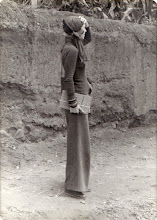Because the debate on the genre's legitimacy took so long to close out, presenting the fast-moving, sometimes hermetic and sometimes crosspollinating practice seems to seek a balance between tying in a historical perspective, citing origins from Keith Haring and Basquiat but then leapfrogging to a survey of contemporary practices, in an almost catalogue-like style, like an 18th-century throwback to the cabinet of wonders (like the Fondation Cartier's vitrine of train-conductor keys used to get into the train-holding areas by graffiti artists, and the jumpsuit Jon1 used to look like an employee, or the mountains of Montana spray-cans - http://fondation.cartier.com/) or one of those provincial science-wonder shows, from World Fair freaks to today's fairground reptile or insect terrarium exhibits ("Extraordinary! Creepy! Come see it! - parking lot next to Costco, off the A-42!").
Nonetheless, being immersed in the Fondation Cartier's dark rooms, walls covered in temporary graffiti made for the exhibit and hordes of hipsters swayed by hip marketing to attend the opening was an experience more than an education, which is one way that museums like the NGA and the Fondation Cartier attempt to address these somewhat pigeonholed issues, if their videos and websites are any indication of their approach.
I didn't get a chance to see Recognize! in person, I'm sad to say, but I'm hoping the video doesn't do it justice. Oblique references to and glimpses of David Sheinbaum's photography and Nikki Giovanni's poetry were outpaced by long monologues of the curators' personal experiences. The only shots of fine art were of Kehinde Wiley's paintings, which served as bait in the video rather than participating in an articulated thesis or idea. Being the Smithsonian's first show on graffiti/hip-hop culture and simply recognizing its existence aren't quite replacements for saying something about what's being shown. Wiley's work references hip-hop culture, of course, but it's also about art itself. Rather than having someone say the show was about "How hip-hop has influenced the art world.", why not show it in the actual works themselves? Wiley's juxtapositions and overlays of high and low culture, hiphop icons and renaissance codes, riffing on everything from court portraiture to religious icon writing to music culture posters seem to say so much more. Why turn them into pretty pictures to fit a context? Why not bring the rest to its level? Recognize that!
Reading in parallel with the Pinakothek's Moderne as described by the Schjeldahl, being "hip" isn't always a miss. It seems that sensibility to the environment, architectural or pop cultural, is key to setting the tone and marking the moment, rather than being outdated upon arrival.
On the technology side, however, the Fondation's website is a great counterpoint - with videos, bios, and tours in a simple, borderless black-on-white template, one can even choose an alphabetical letter and see scores of now recognized graffiti names and their variations on that letter, in a graphically striking way, and with stills of their work from the cities to boot.




